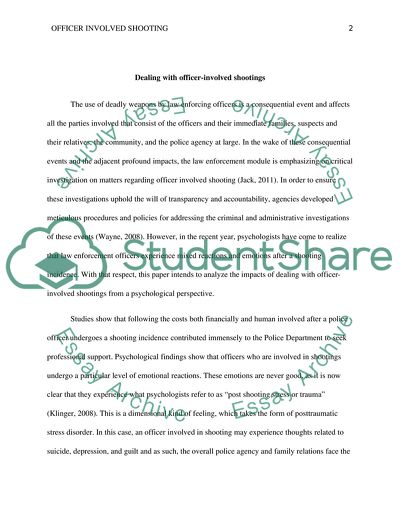Cite this document
(Dealing with Officer-Involved Shootings Coursework Example | Topics and Well Written Essays - 2500 words, n.d.)
Dealing with Officer-Involved Shootings Coursework Example | Topics and Well Written Essays - 2500 words. https://studentshare.org/law/1777426-dealing-with-officer-involved-shootings
Dealing with Officer-Involved Shootings Coursework Example | Topics and Well Written Essays - 2500 words. https://studentshare.org/law/1777426-dealing-with-officer-involved-shootings
(Dealing With Officer-Involved Shootings Coursework Example | Topics and Well Written Essays - 2500 Words)
Dealing With Officer-Involved Shootings Coursework Example | Topics and Well Written Essays - 2500 Words. https://studentshare.org/law/1777426-dealing-with-officer-involved-shootings.
Dealing With Officer-Involved Shootings Coursework Example | Topics and Well Written Essays - 2500 Words. https://studentshare.org/law/1777426-dealing-with-officer-involved-shootings.
“Dealing With Officer-Involved Shootings Coursework Example | Topics and Well Written Essays - 2500 Words”. https://studentshare.org/law/1777426-dealing-with-officer-involved-shootings.


